How To Fix Hydraulic Press
Hydraulic Press
Introduction
This article covers all the information you need to know on hydraulic presses.
You will learn more about topics such as:
- What is a hydraulic press?
- How a hydraulic press works
- Types of hydraulic presses
- Uses for hydraulic presses
- And much more …
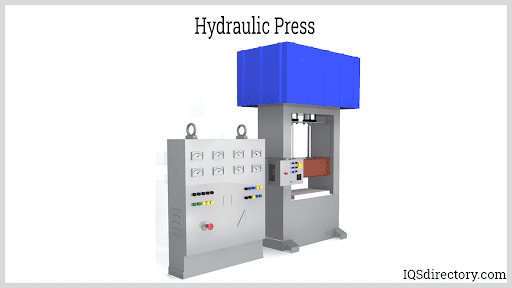
Chapter One: What is a Hydraulic Press?
A hydraulic press is a mechanical device that uses the static pressure of a liquid, as defined by Pascal's principle, to shape, deform, and configure various types of metals, plastics, rubber, and wood. The mechanism of a hydraulic press consists of a mainframe, power system, and controls.
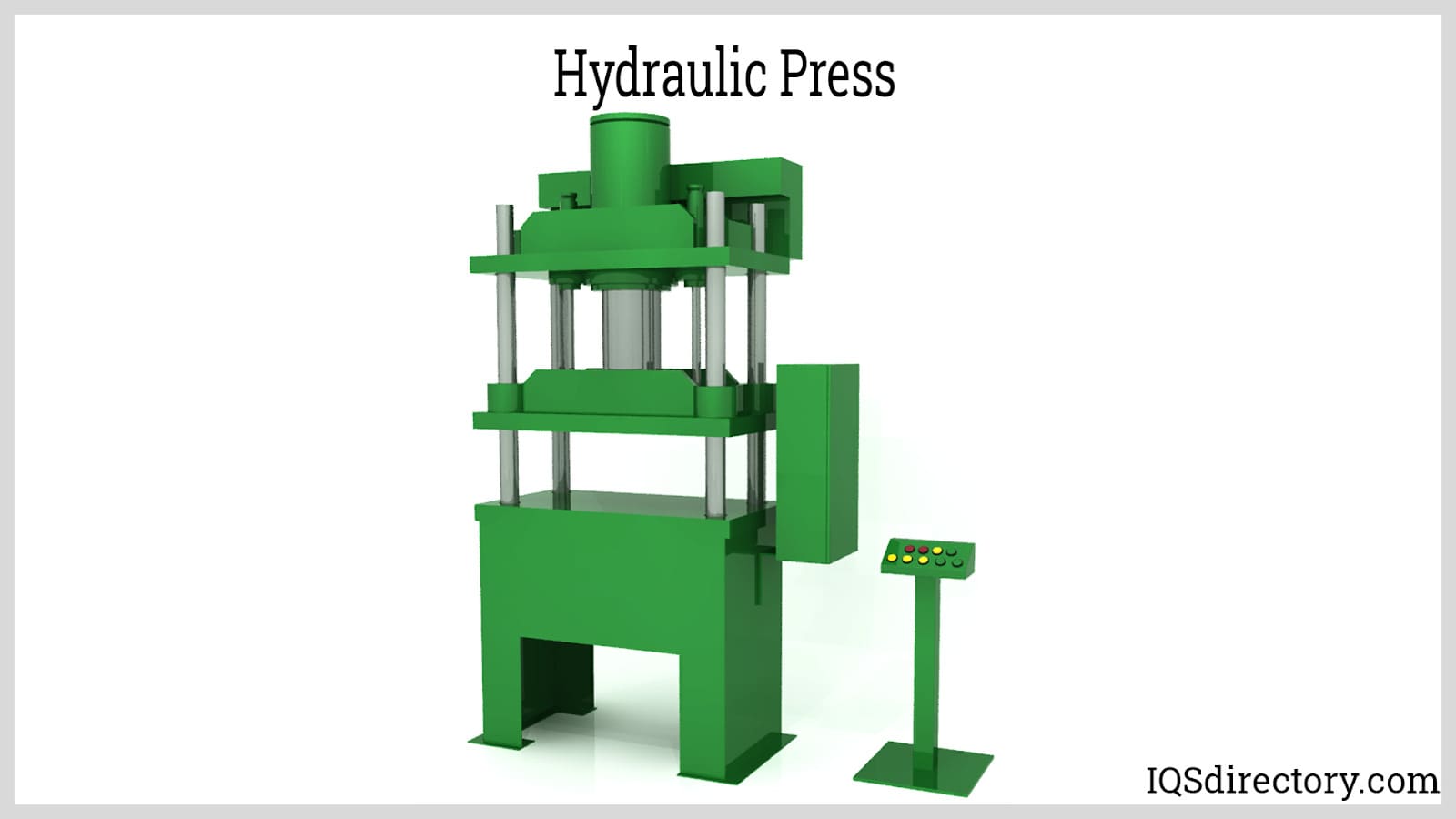
Pascal's principle states that when pressure is applied to a confined liquid, a pressure change occurs in the liquid. For a hydraulic press, the pressure in a liquid is applied by a piston that works like a pump to create mechanical force.
Chapter Two: How a Hydraulic Press Works
The process of a hydraulic press begins when a hydraulic fluid is forced into a double acting piston. The compressive force inside the small hydraulic cylinder pushes the fluid into a larger cylinder where more force and pressure are applied. The movement of the larger piston forces the fluid back into the smaller piston cylinder.
The passage of the fluids between the two pistons creates increased pressure that produces mechanical force to drive the anvil on a hydraulic press downward onto a workpiece that is deformed to produce a desired shape. Once the movement is complete, the pressure is released and the anvil returns to its original position.
How a Hydraulic Press Works
The components of a hydraulic press include two cylinders, two pipes, and two pistons. One of the cylinders is the ram and the other is the plunger; they are connected by a chamber that is filled with hydraulic fluid.
Ram
In many hydraulic systems, several rams are used, the number of which depends on the working load. Multiple small rams are preferred over a single larger one to allow for better control over the thrust force. Fluid is supplied to the ram by a pump and hydraulic accumulator that works between the rams and the pump.
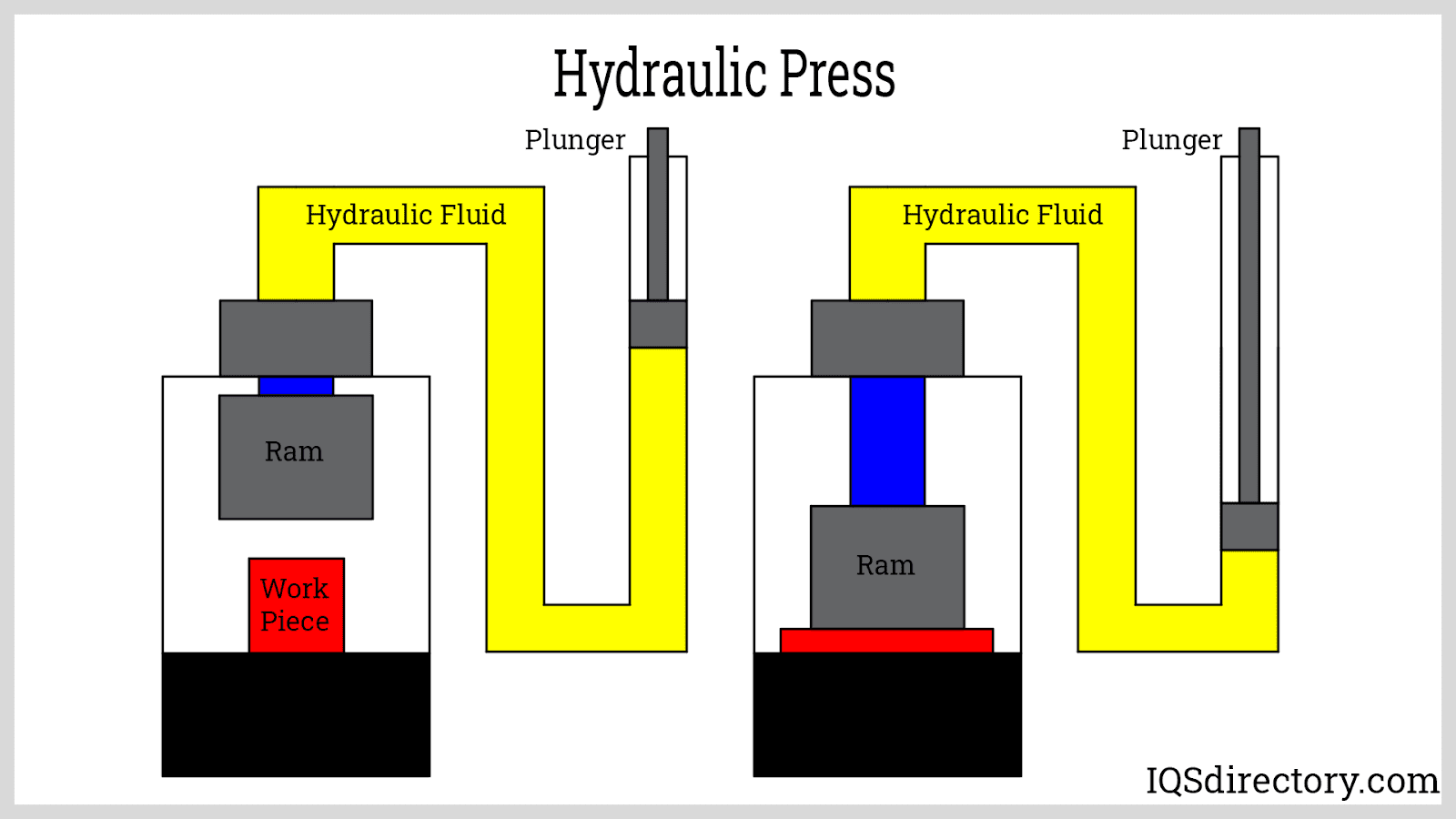
Accumulator
The accumulator stores hydraulic pressure as a fluid, which is released when required. The configuration of a hydraulic accumulator is a cylinder with a piston that is spring loaded or pneumatically pressurized. The pump continuously pumps hydraulic fluid into the accumulator to keep the pressure in it constant. The inlet of the accumulator is attached to the pump, while the outlet is attached to the machine.
Without the accumulator, the pump would have to be continually running. The accumulator helps avoid this by serving as a storage container for the energy needed to operate the machine.
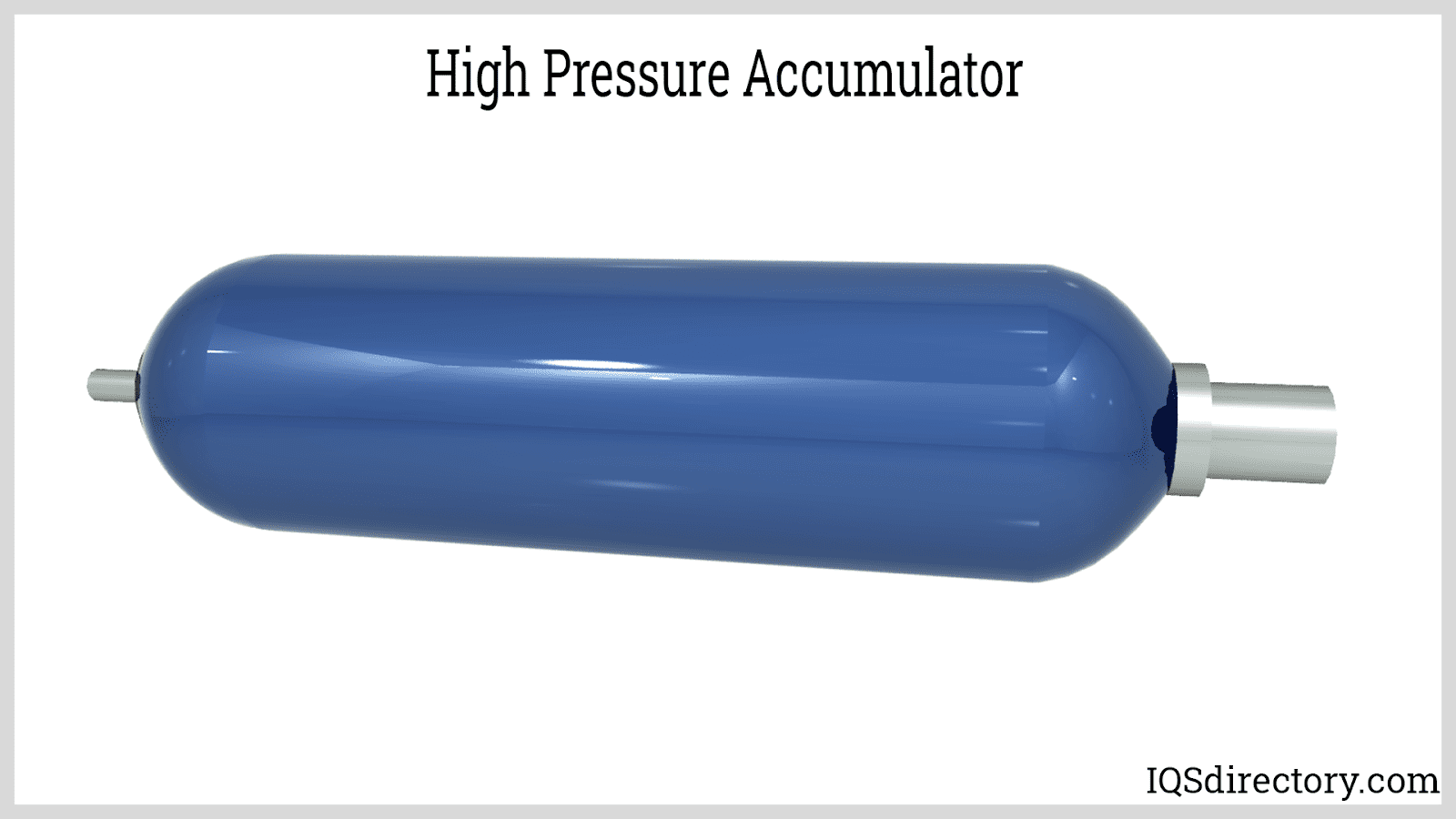
Pump
The three types of hydraulic pumps are vane, gear, and piston with piston pumps being the most commonly used. The pumps for a hydraulic press are a positive displacement pump, which means they deliver a constant amount of fluid with each pumping cycle. The positive displacement pump can be fixed or variable with a fixed pump working at a constant speed while a variable pump changes speeds and can be reversed.
The reason that piston pumps are best suited for hydraulic presses is their ability to perform in high pressure hydraulic systems. The pump operates at large volumetric levels due to its low fluid leakage. The types of piston pumps include axial, bent axis, and radial.
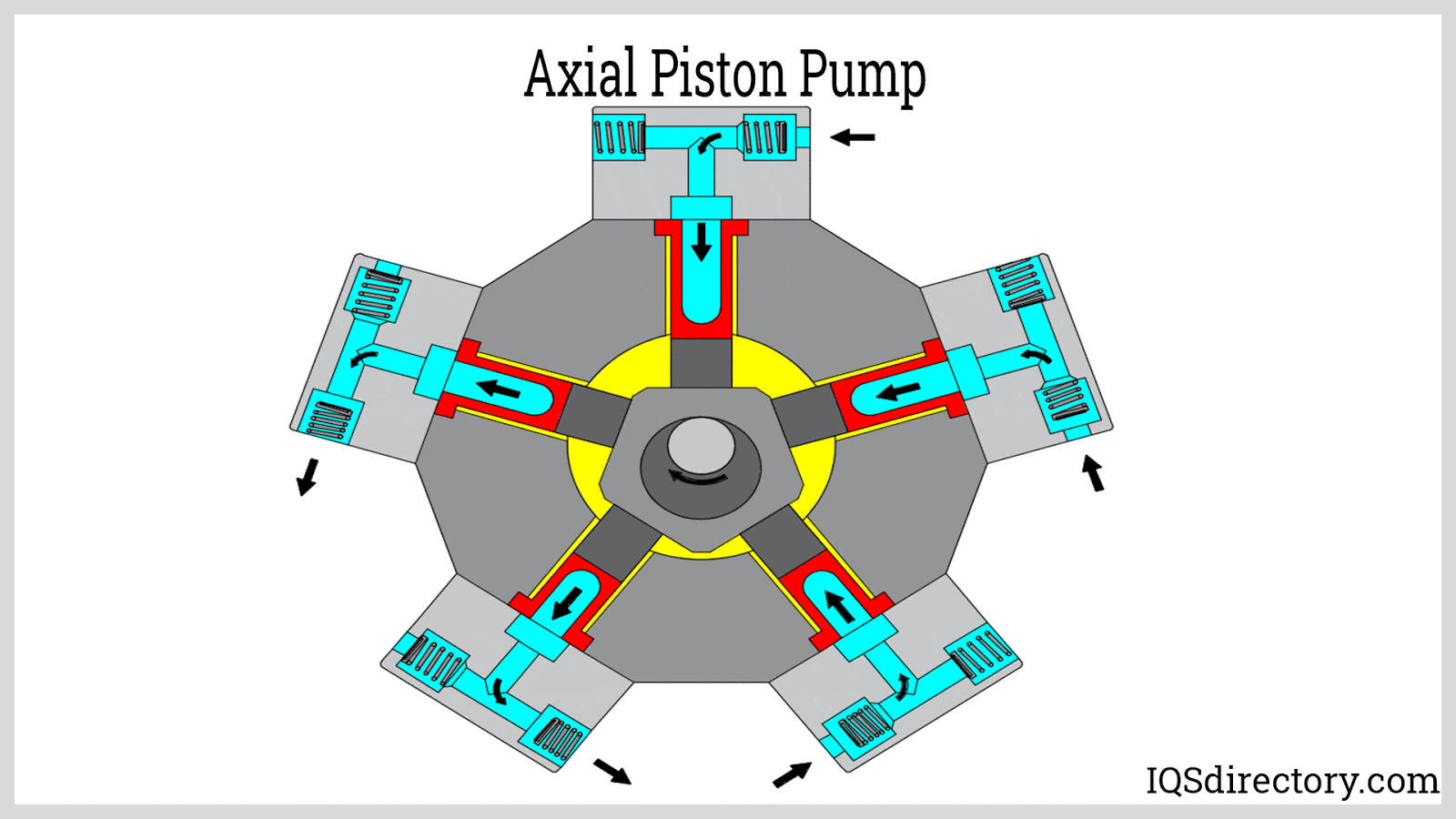
Cylinders
The number of cylinders in a hydraulic press varies according to its design. The function of the cylinders is to generate the compressive force that drives the anvil and die. In a two cylinder design, the diameter of the cylinder that carries the ram is larger, while the diameter of the second cylinder that carries the plunger is smaller. Cylinders are metal pipes with two ports for the input and output of hydraulic fluid.
The cylinders are connected by a pipe containing hydraulic fluid. When the plunger in the small cylinder applies pressure to the hydraulic fluid through a downward action, the created pressure is applied to the ram. The action in the smaller cylinder by the downward movement of the plunger is that of a mechanical actuator used to produce unidirectional force by a unidirectional stroke.
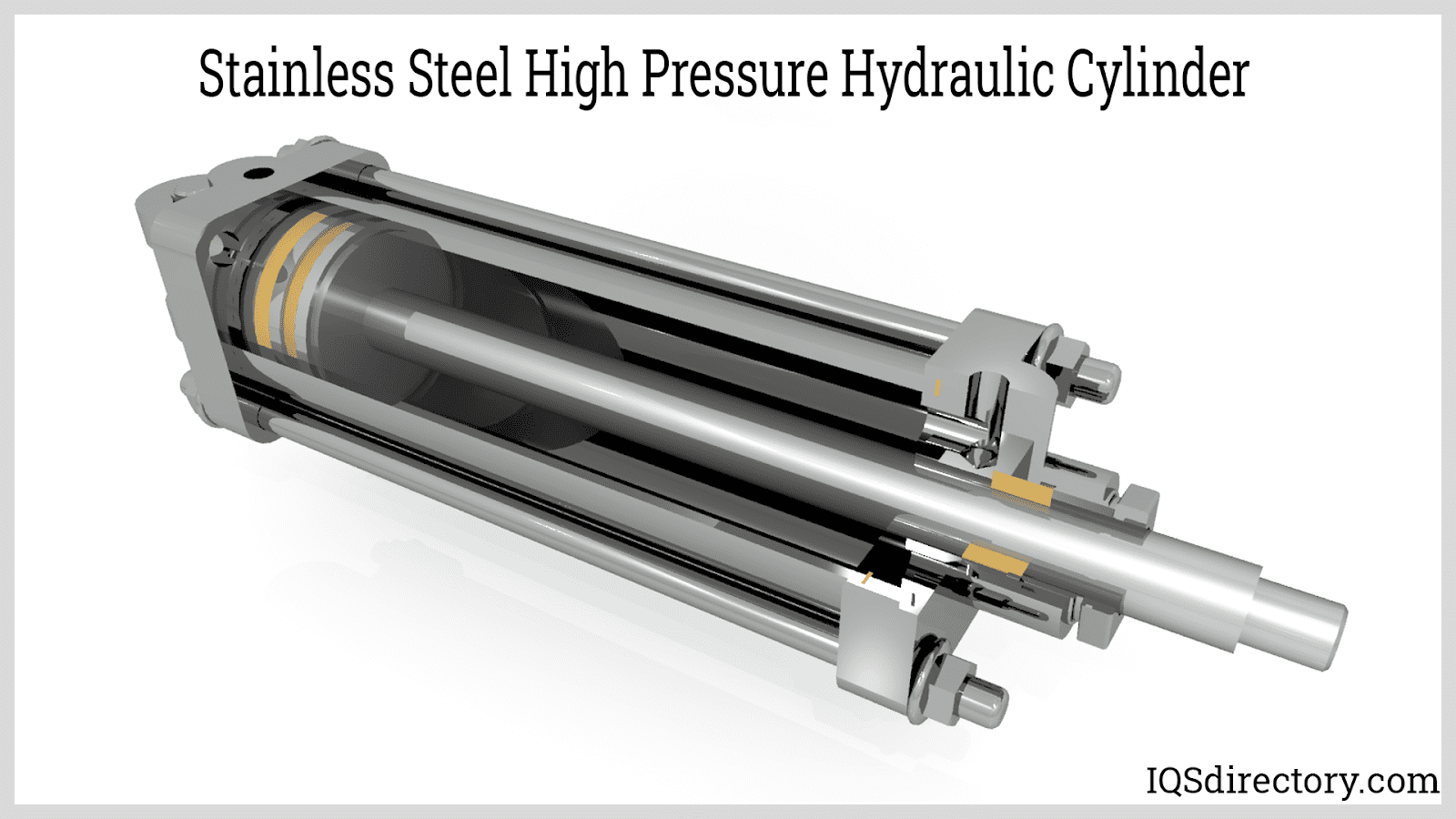
Hydraulic Press Process
The mechanical results of the pressure created in the hydraulic system can be seen in the animation below where a plane slug is placed under the anvil, and pressure created by the cylinders drives the ram that drives the anvil down into the slug and forces it into the die.
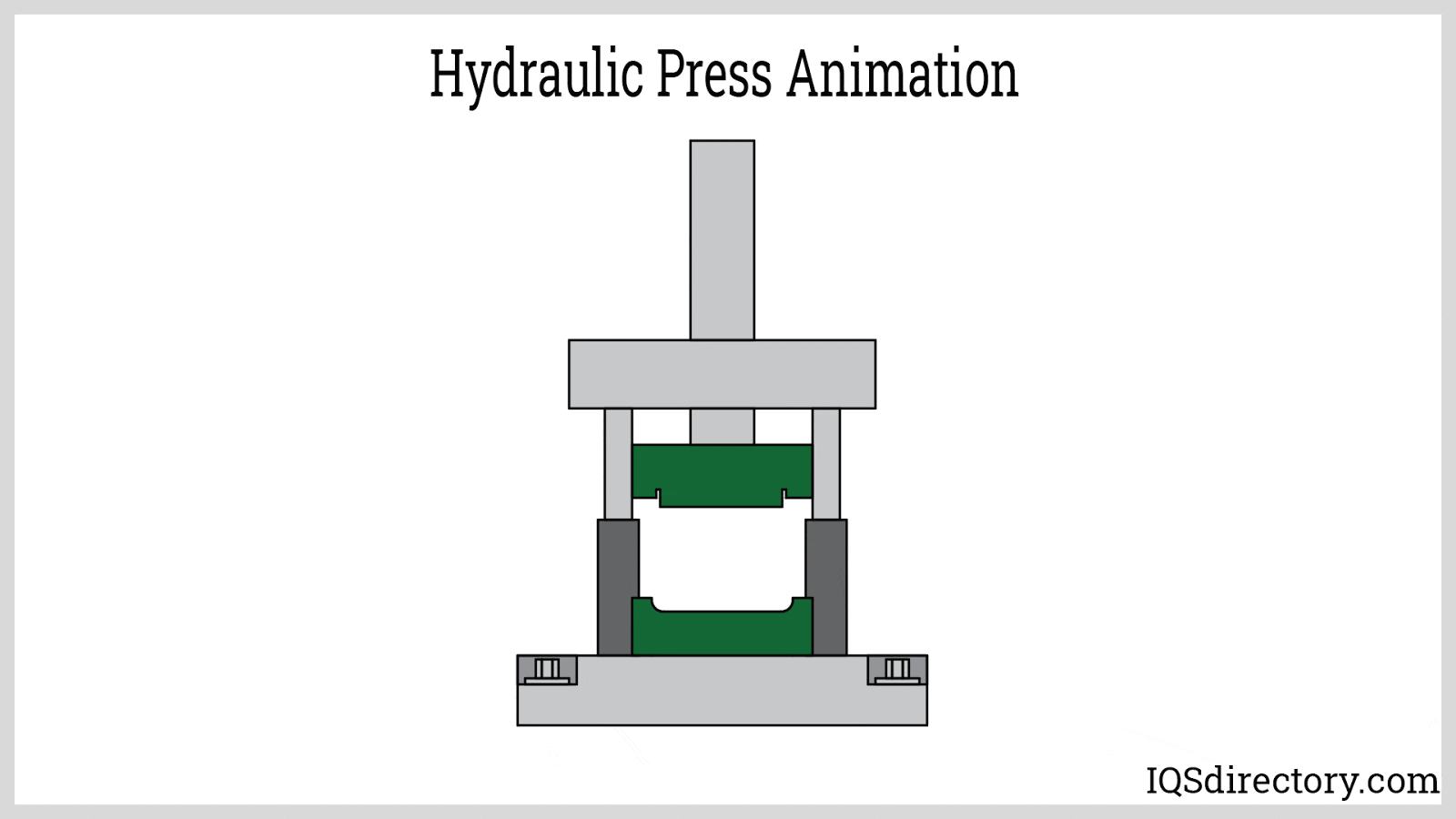
GET YOUR COMPANY LISTED BELOW
Leading Manufacturers and Suppliers
Chapter Three: Types of Hydraulic Presses
Hydraulic presses play a major role in the fabrication, assembly, and production of components for machinery and parts for commercial and industrial products. The differences between the types of hydraulic presses are determined by several factors, which include their frame and the metals used to manufacture them.
The popular use of hydraulic presses in manufacturing is due to their ability to apply substantial compressive force to billets to flatten, shape, straighten, stamp, and bend the billets into designs and various forms. The process of hydraulic presses, with the use of a variety of dies, can be changed and customized to fit a wide range of manufacturing requirements.
Types of Hydraulic Presses
H Frame Hydraulic Press
With an H frame (two column) hydraulic press, the frame, press cylinder, pump, and bolster are in the shape of an "H." The uses for H frame presses include work in repair shops, maintenance buildings, and production assembly lines. They have a hand pump for low volume applications or air and electrical pumps where consistent operation is required. The amount of available force in an H frame depends on the size of its cylinder.
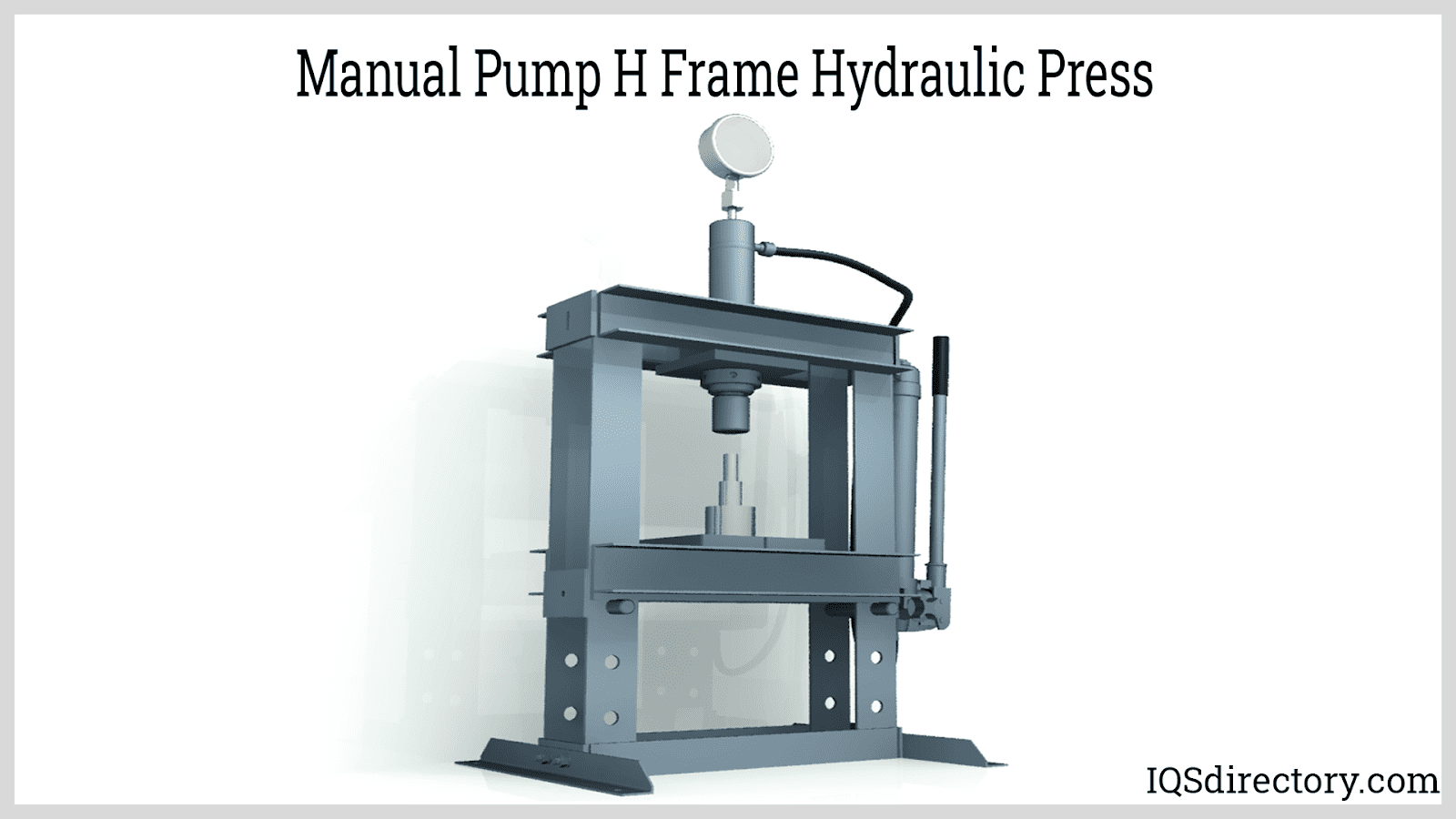
C Frame Hydraulic Press
Single column (C frame) hydraulic presses have a body frame in the shape of the letter "C" with a single arm structure. They have excellent rigidity, guide performance, speed, and exceptional precision. They are ideal for small operations and require limited floor space.
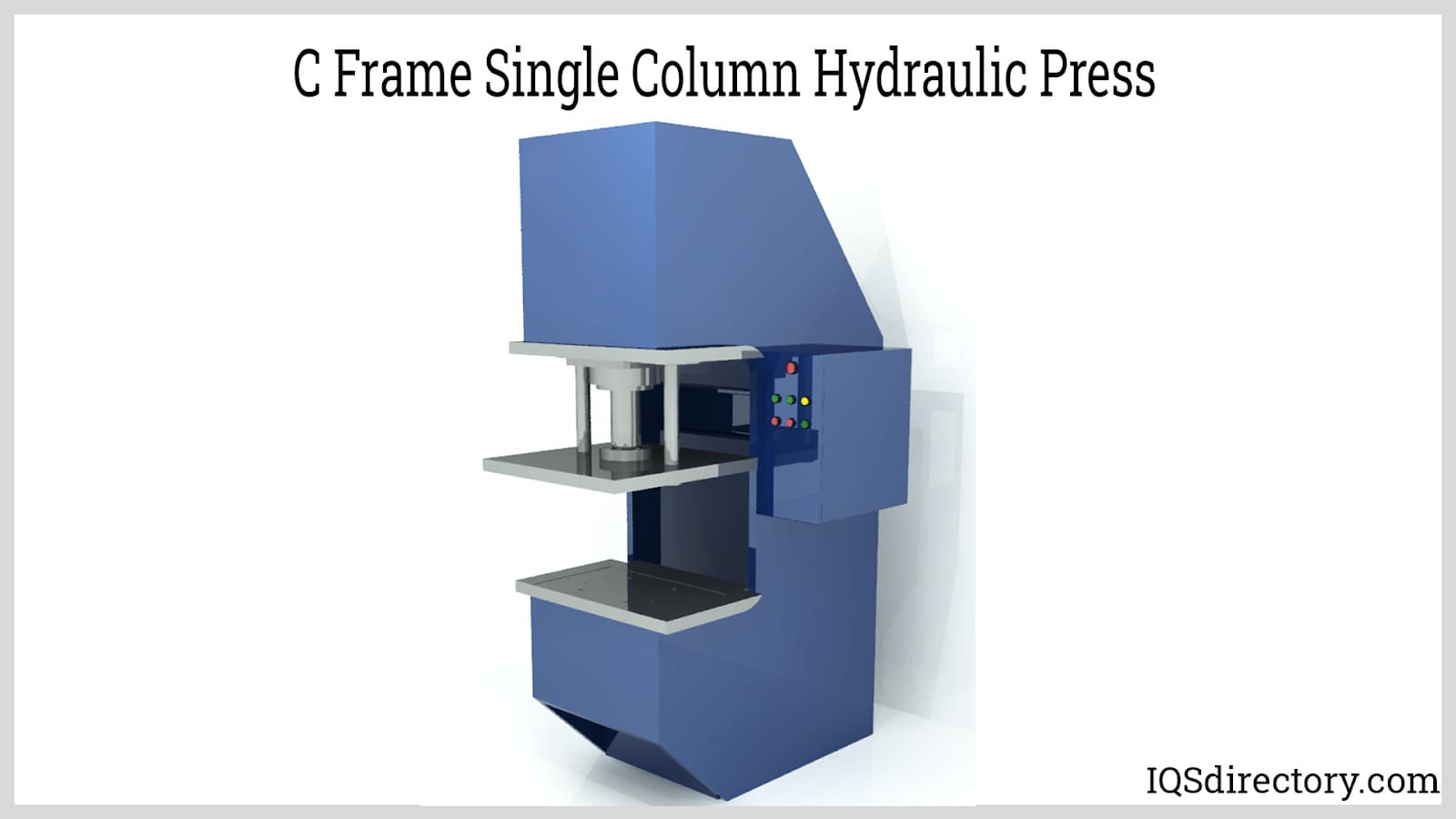
Four Column Hydraulic Press
Four column hydraulic presses can apply substantial force to any size work piece. They can have a single or two cylinder design depending on the requirements of the manufacturing process. Four column presses have a central control system with semi-automatic cycling and adjustable pressure and compression speed. The punching and working pressure are adjusted in accordance with the needs of the stroke range.
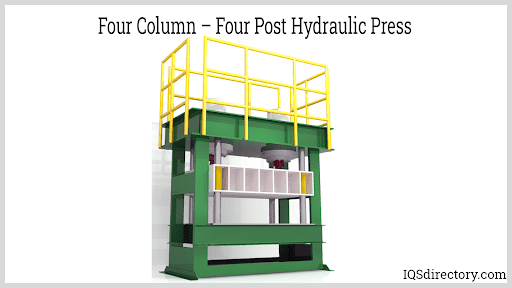
Horizontal Hydraulic Press
There are operations where it is difficult to shape a component or part using a conventional vertical press because the part is too long or short to load vertically. Those types of workpieces are shaped by a horizontal press where pressure is applied horizontally.
With a horizontal press, there are two platens with one being fixed while the other is movable. Pressure is applied horizontally between the platens. This type of press has a protective mechanism on the hydraulic system to avoid overload, and it can have different tools attached.
Hydraulic Wheel Press
A horizontal wheel hydraulic press is used for mounting and unmounting wheels, bearings, gears, and sheaves onto and off of shafts, axles, rolls, or armatures. They are used for the correction of shaft parts and pressing of shaft sleeve parts. A wide range of industries use hydraulic horizontal wheel presses as part of their production process. Examples include the automotive, motor, electronics, mining, and home appliance industries where precision press mounting is necessary.
Straightening Hydraulic Press
When large, long shafts from oil rigs, cars, trucks, and aircraft need to be straightened, the ideal method is a hydraulic straightening press that slowly controls the straightening process, resulting in accurate and fully functional parts. Hydraulic straightening presses can be used to straighten shafts, plates, and large weldments.
Straightening hydraulic presses for weldments straighten the workpiece prior to it being welded. The process for working with shafts is a little more difficult since they come in different diameters and lengths.
Straightening hydraulic presses can have a fixed head or moving gantry. When large diameter shafts are being straightened, gantry type presses are used where the press moves along the X axis while the main cylinder provides Z axis downward movement to engage the shaft.
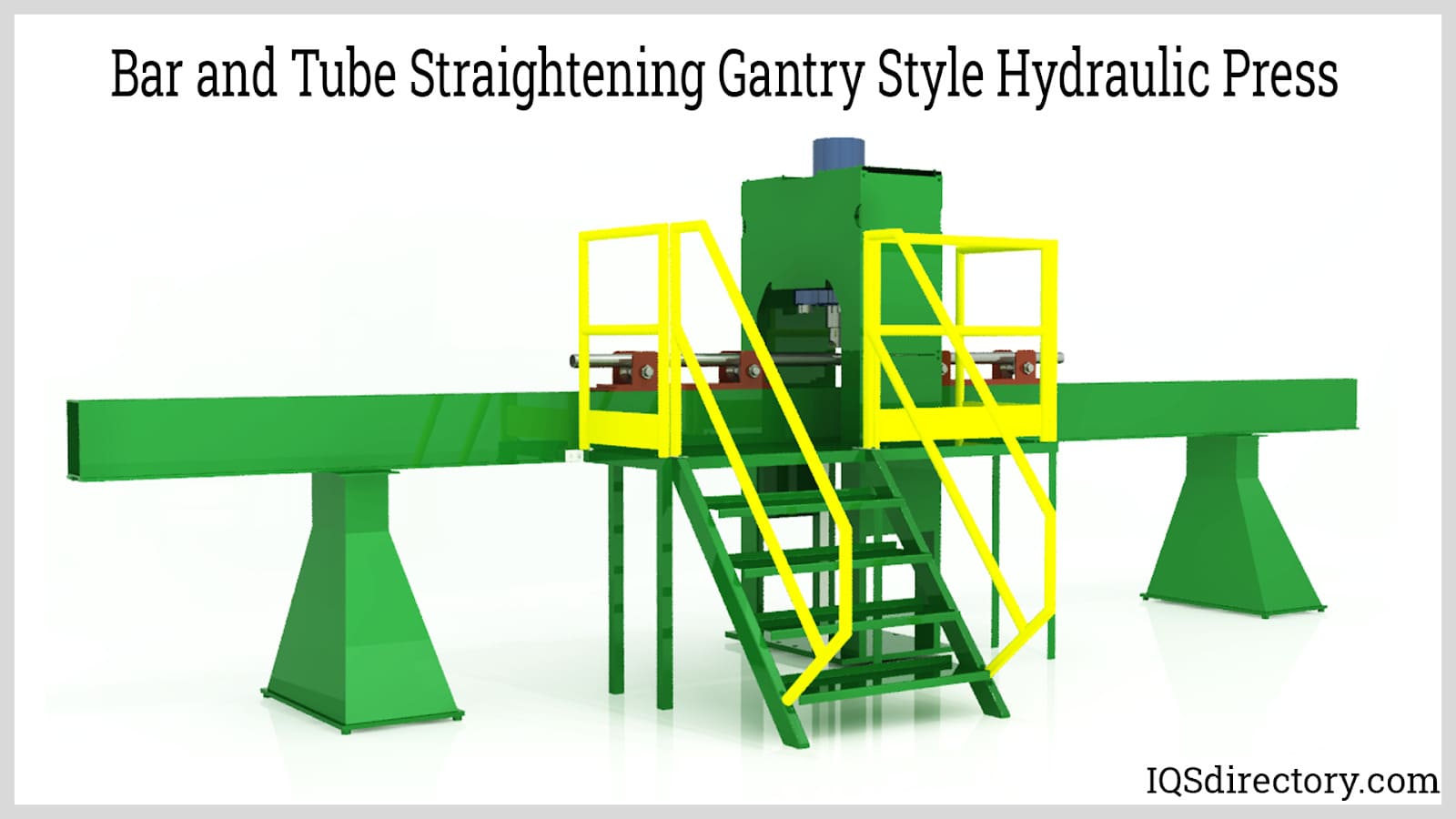
Chapter Four: Uses for Hydraulic Presses
The hydraulic press is a major part of a variety of manufacturing and production processes. From the shaping and creation of machine components to crushing and compacting waste and refuse, hydraulic presses are an essential part of modern industrial operations.
The use of hydraulic presses is based on the concept of compressive force created by pistons that produce mechanical force through the use of pressure from an incompressible liquid. The amount of force can range from a few tons for a manual hydraulic press to thousands of tons for motor driven ones.
Uses for Hydraulic Presses
Manufacturing
Part production and fabrication are the most common uses for hydraulic presses. The speed at which hydraulic presses can configure and shape automobile parts from wiper blades to gear housings has made it an essential part of product manufacturing. The number of industries that depend on hydraulic presses range from steel production and assembly to precise and complex electronics components.
Powder Compacting
A powder compacting press compresses different powdered materials into shapes, designs, and densities by applying an exact amount of pressure to the material placed in a mold. Any of the various hydraulic presses can be used for the process, from the two column version to four column version.
To complete the compacting process, the powder mixture is loaded into a steel die where it is pressurized to the shape and form of the die. The three stages of the compressing process deform the particles of the powder and significantly increase its density.
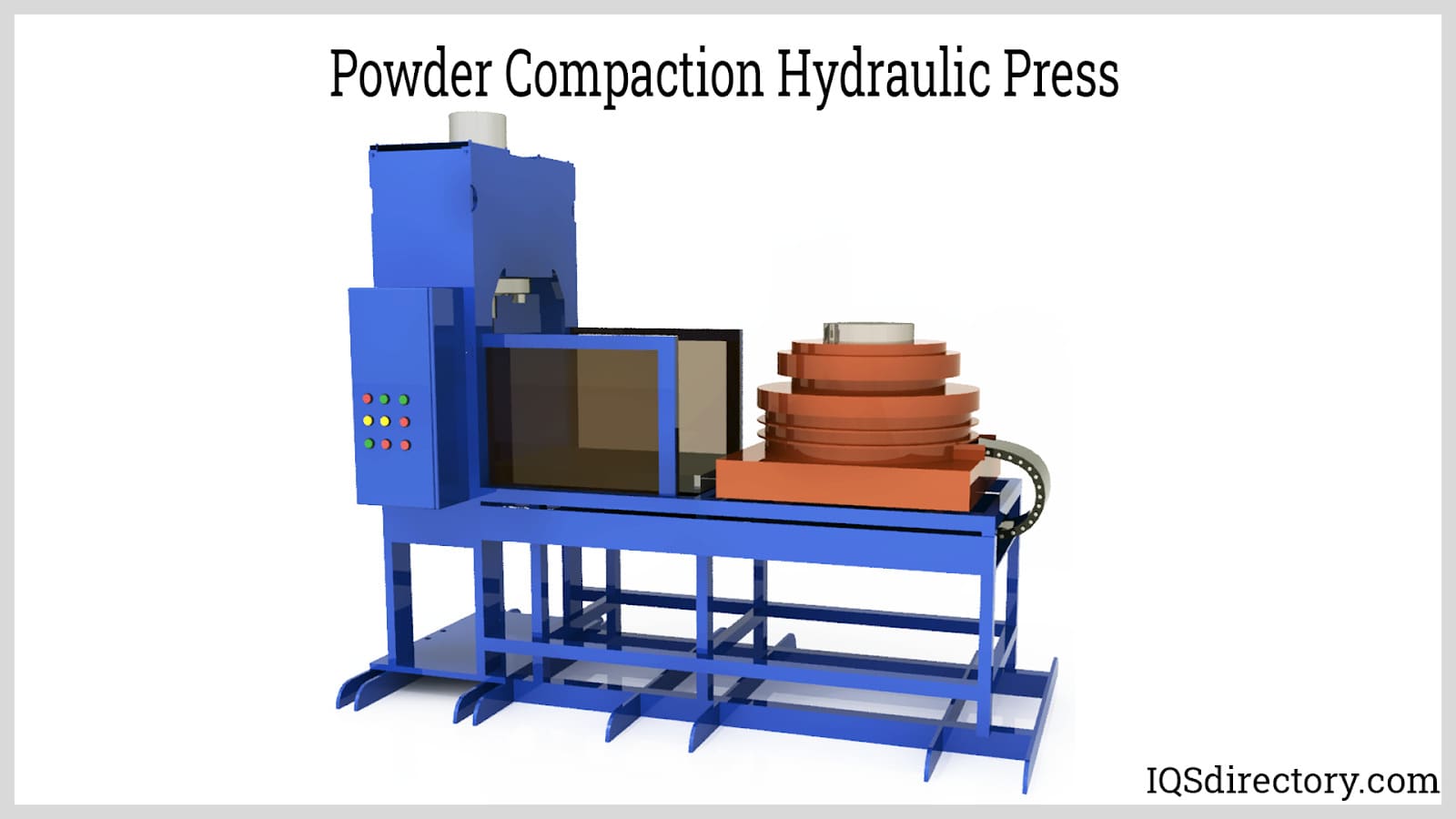
Scrap Baling
An image of hydraulic presses that has become popular in entertainment is the scrap baling press that crushes cars, equipment, and machines. This type of hydraulic press has gained popularity as a method for recycling and repurposing the raw materials from products that are no longer of use.
A hydraulic scrap baler is a cold pressing method for compacting various types of metals for convenient storage, reprocessing, and transport. There are a wide range of scrap balers, with each type designed to crush and compact a particular type of material.
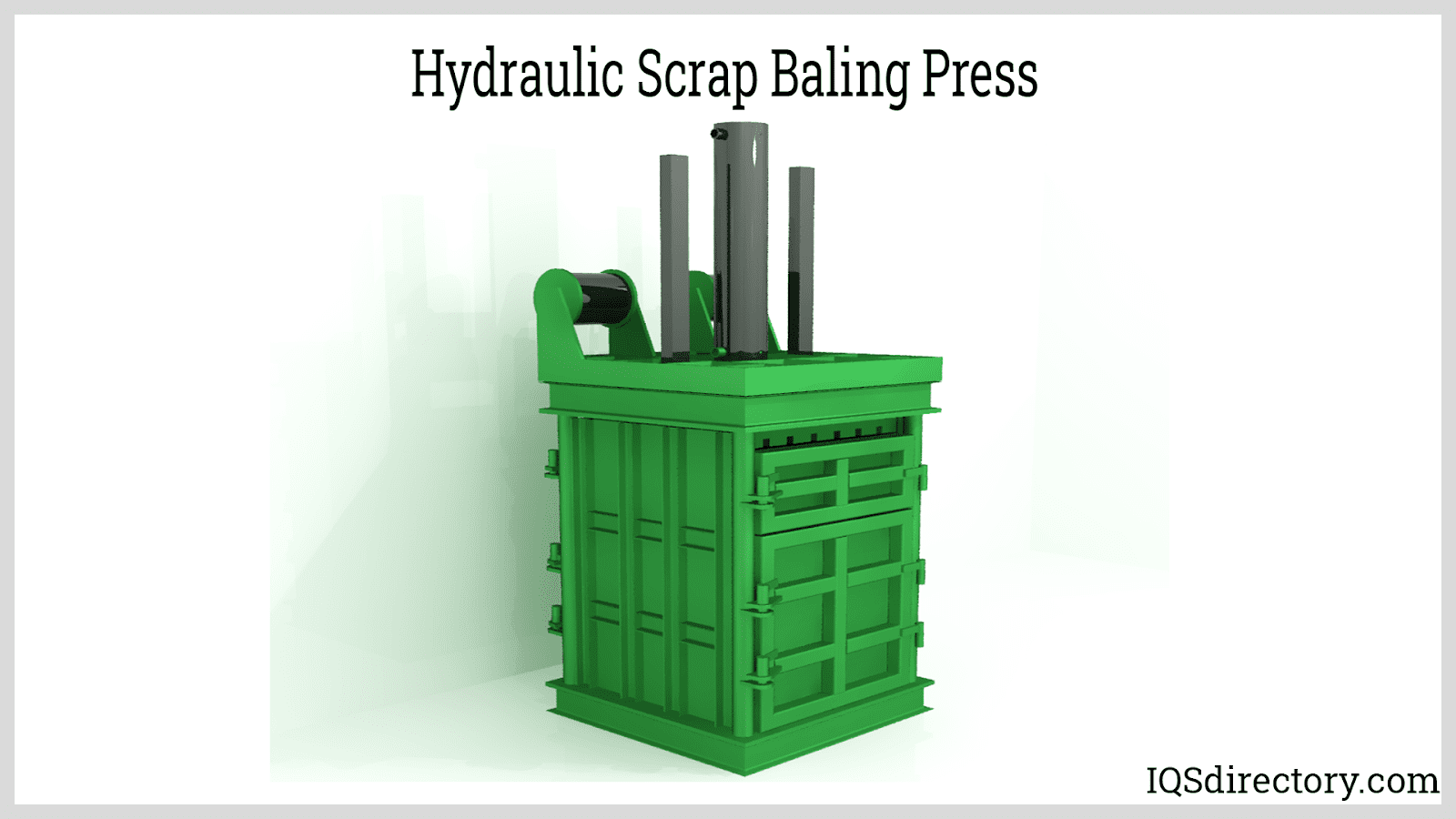
Ceramics Production
The traditional method for shaping and forming ceramics uses a heated kiln at a temperature exceeding 1800° F. The heated method is slowly being replaced by hydraulic presses that work at room temperature. Using minimum pressure and significantly less time, hydraulic presses compress ceramic material into shapes and forms such as bathroom tiles, bricks, and cement.
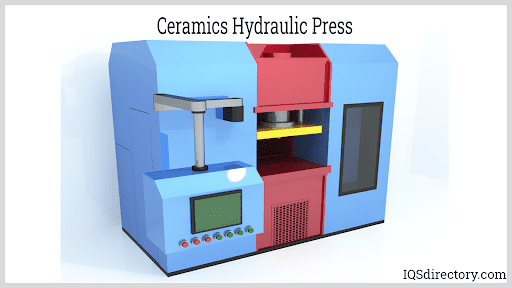
Laboratory
Laboratory presses are used for the development and production of new products and for quality control of products in production. During product development, manufacturers test their production methods and efficiency using laboratory presses. Though the majority of laboratory presses are small and compact, they can complete all of the functions of a production hydraulic press to provide data and performance guidelines.
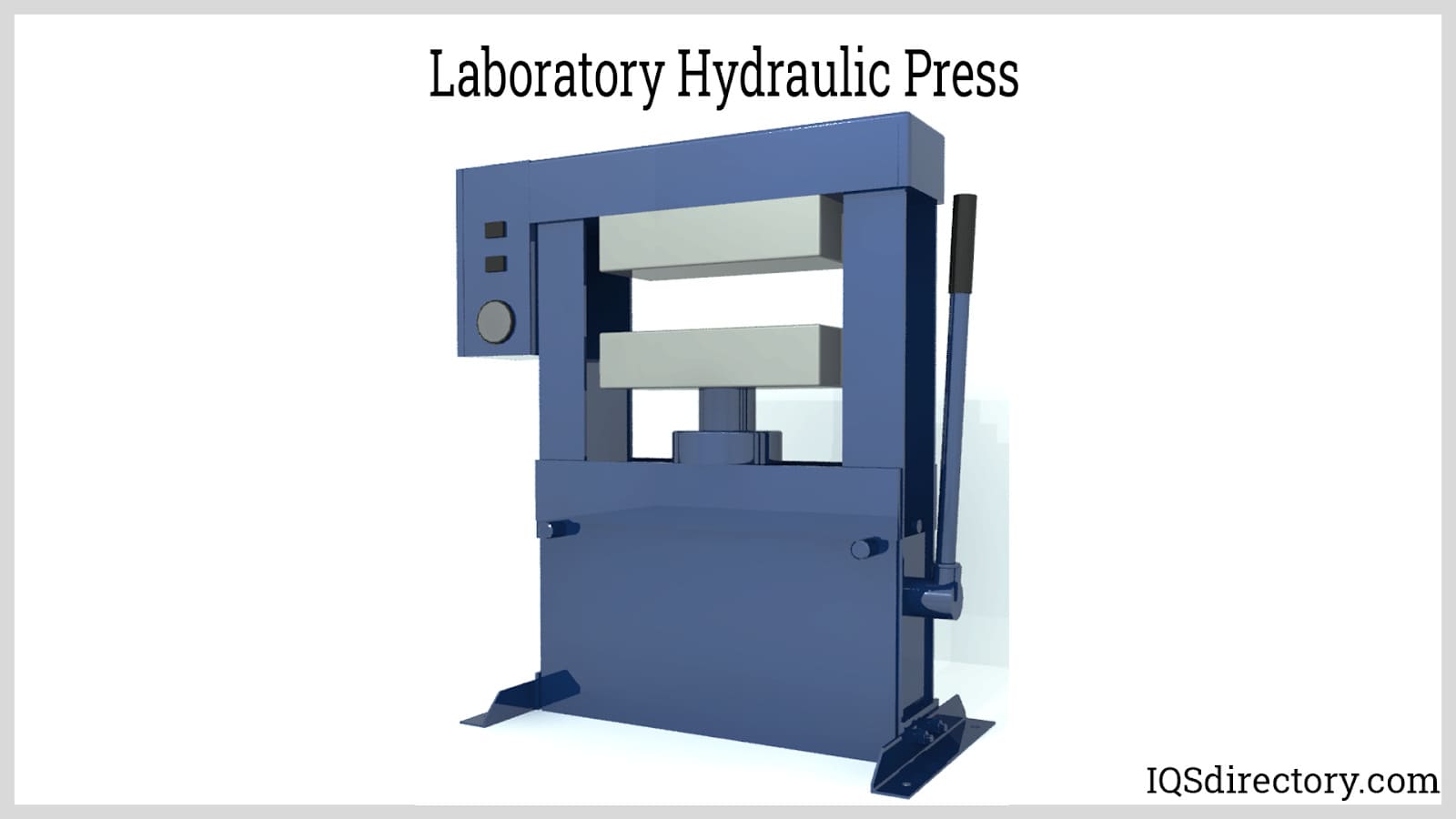
Military
A standard hydraulic press for the military is used to load shells and other ammunition. Other applications are fuel cell compression and the production of tracks and tires. Applications for military manufacturing require technically defined metal formed parts that have to meet specific dimensions and tolerances. Hydraulic presses used to produce parts for the military meet the demand for minimal variations in quality and performance.
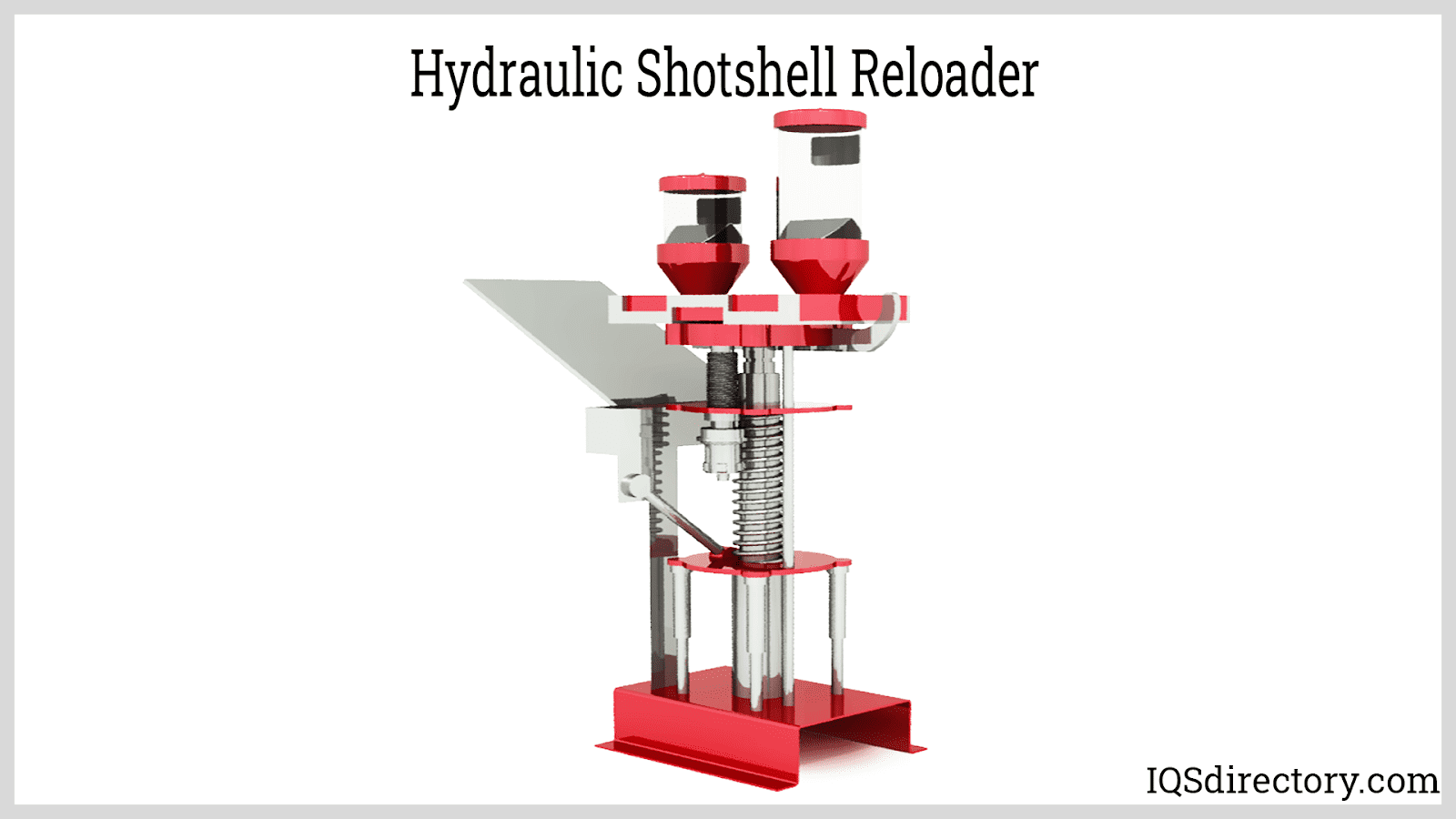
Concrete Testing
Concrete is extensively used in the construction industry for building skyscrapers, warehouses, and manufacturing facilities. Manufacturers of concrete use hydraulic presses to test the tensile strength and behavior of set concrete. The tests provide data regarding predefined tension softening. The acquired data is used to adjust the concrete mixture to meet the required standards.
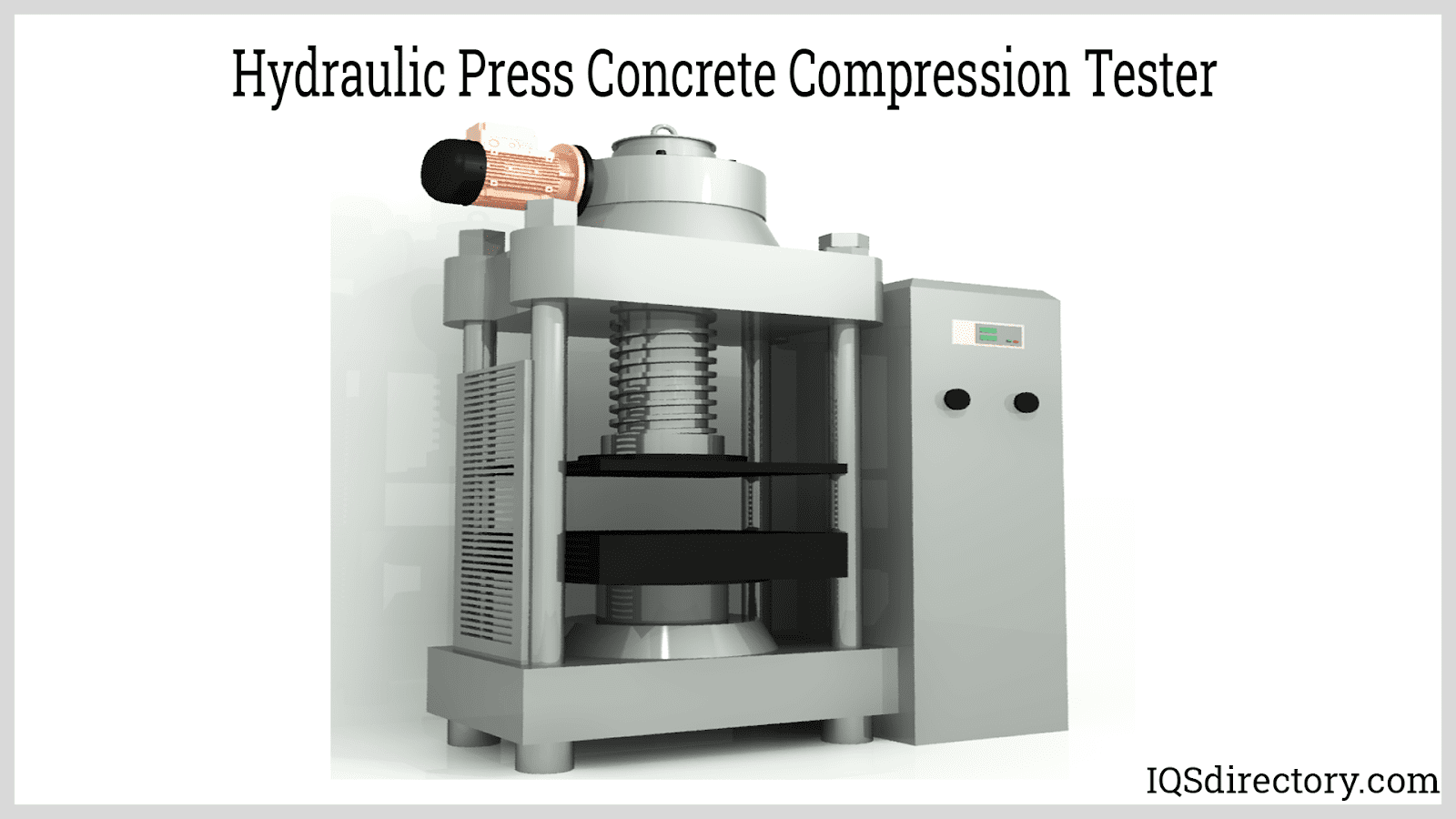
Chapter Five: Hydraulic Press Processes
Since the development of the Bramah Hydraulic Press at the end of the 18th Century, the hydraulic press has rapidly improved and advanced to become a highly technical tool that can provide precision and accurate deforming of materials. The pressurized compressive force of a hydraulic press is an essential part of metal deforming and shaping.
There is a wide array of deforming and shaping methods that a hydraulic press is able to perform. Each of the various processes perfectly manipulates a workpiece to match the requirements of a product or design.
Hydraulic Press Processes
When a hydraulic press is being used to cut, bend, form, draw, punch, coin, or pierce a workpiece, it becomes a means of forging the workpiece using a die with an upper and lower half the shape and form of the piece to be produced. The workpiece is placed on the lower half of the die and the ram lowers the upper half to compress the workpiece to create the desired shape.
Blanking
Blanking is a process of cutting a shape or form from a coil, sheet, strip, or billet of metal. The cut shape is sent on to be further processed. The most common form of blanking is done with a coil of metal that is fed into a hydraulic press.
In the image below, the coil enters on the right, the shape is cut, and it can be seen on the left.
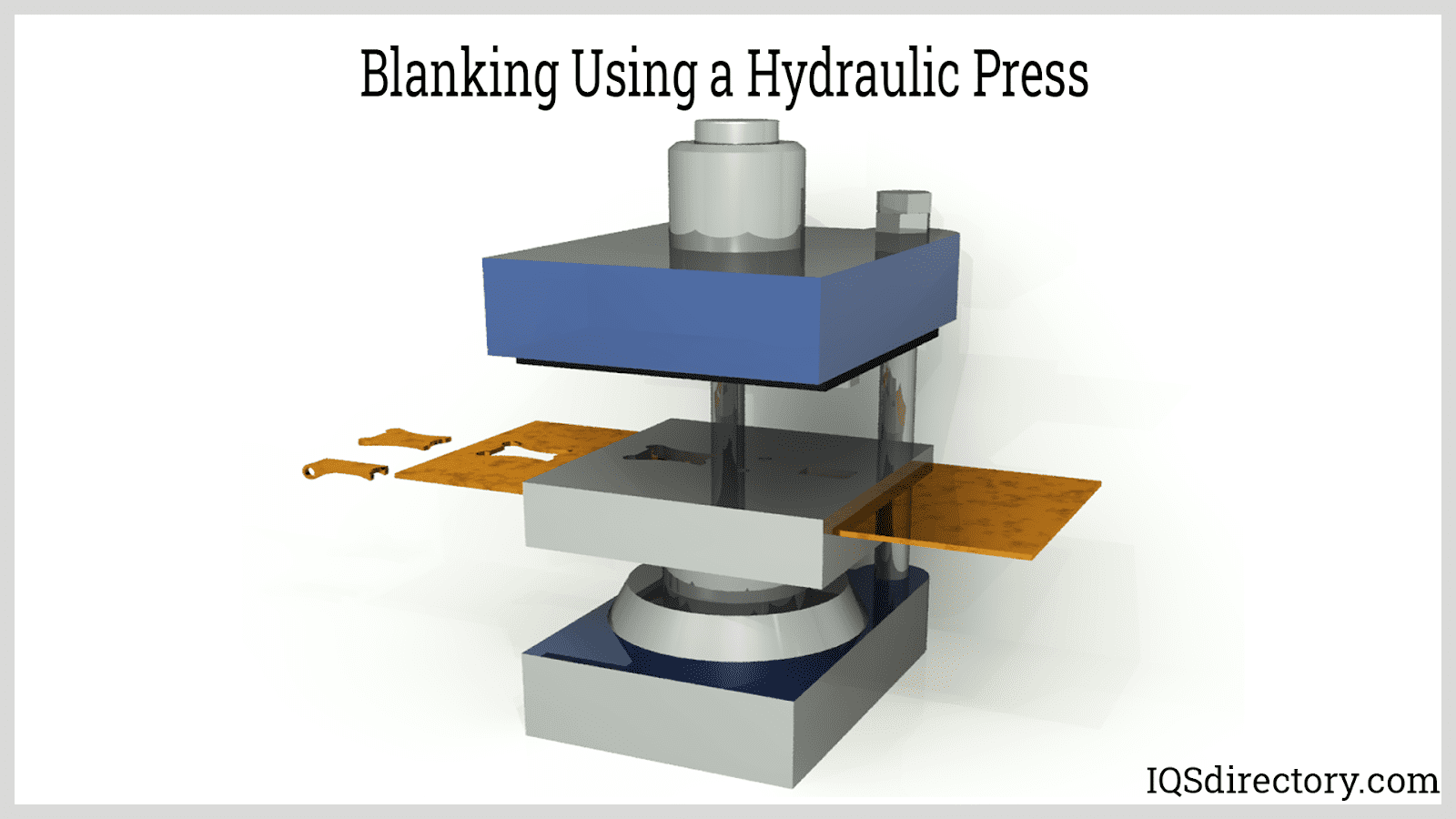
Drawing
Metal drawing deforms a workpiece by reducing its cross section using a mold or die that has a smaller cross sectional area. Unlike extrusion, where the workpiece is pushed through a die, in the drawing process, the workpiece is pulled through the die. The completion of drawing can require force as high as 150 tons.
Piercing
Piercing is a sheet metal punching process that is used to extrude shapes in a metal sheet. The term piercing is a generic term used to describe the cutting, punching, and shearing of openings in a workpiece. Piercings can be holes, slits, slots, or any other shape, and it is the opposite of blanking. In the blanking process, the piece that is cut out is the workpiece. In piercing, the section that is cut out is scrap.
In the image below, the finished product on the left has had the scrap on the right removed by piercing.
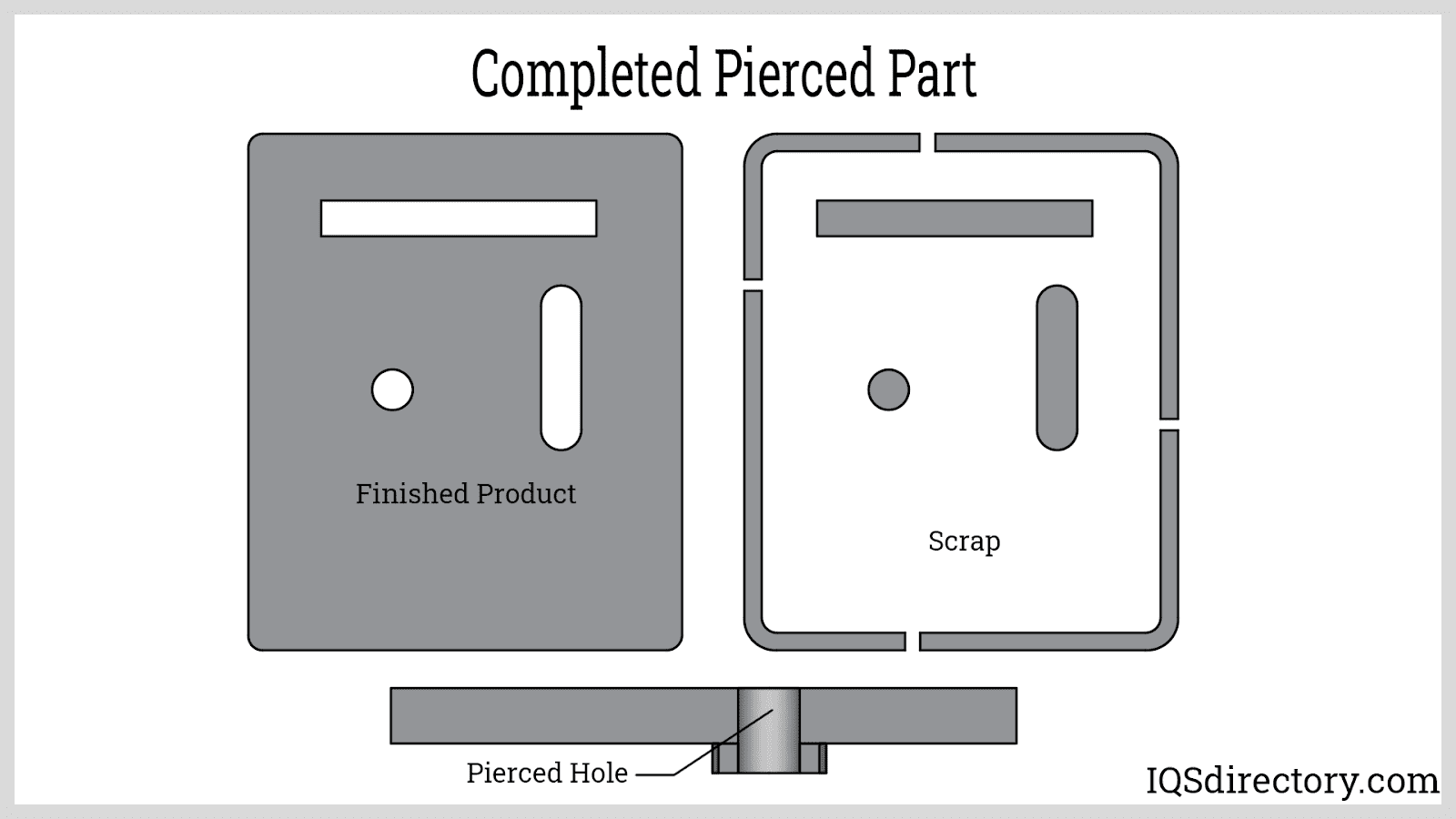
Stretching
Stretch forming is a metal forming process where a piece of sheet metal is stretched and bent over a die to form a large, contoured part. The workpiece is gripped on its edges by a carriage that is powered by hydraulic force. The forming block is a form die against which the workpiece is pressed. The stretching process is normally performed on a vertical hydraulic press, and it reduces the thickness of the workpiece.
Straightening
The straightening process is used to straighten shafts or sheet metal that are damaged or bent. In a successful straightening process, the repair relaxes the stress on the shaft that caused it to be deformed. There is a wide variety of hydraulic straighteners, each designed to fit the type of workpiece to be straightened.
One form of hydraulic straightening press has a large table where the press applies pressure to a flat sheet of metal that is curved or curled. For straightening shafts, tubes, and pipes, the piece to be straightened is placed on conveyor-like rollers and fed into the hydraulic press or is set on a platform while the press shapes it.
Folding
A hydraulic folding machine holds the workpiece in its support system and applies pressure to the middle of the workpiece to turn the flanges upward. The process and design of a hydraulic press make it easier to fold several parts and large parts.
The benefits of the hydraulic folding process include reduced risk and lessened surface damage to the workpiece when compared to what is created by the press brake method.
Coining
Coining, also known as minting, is a closed die process used to make the metal workpiece fill the shape and profile of the die. As the metal is squeezed between the halves of the die, the applied pressure deforms the workpiece and changes its thickness, forming it to the die design. The key to the coining process is a slow and steady application of force to produce a detailed surface with perfectly shaped edges and corners.
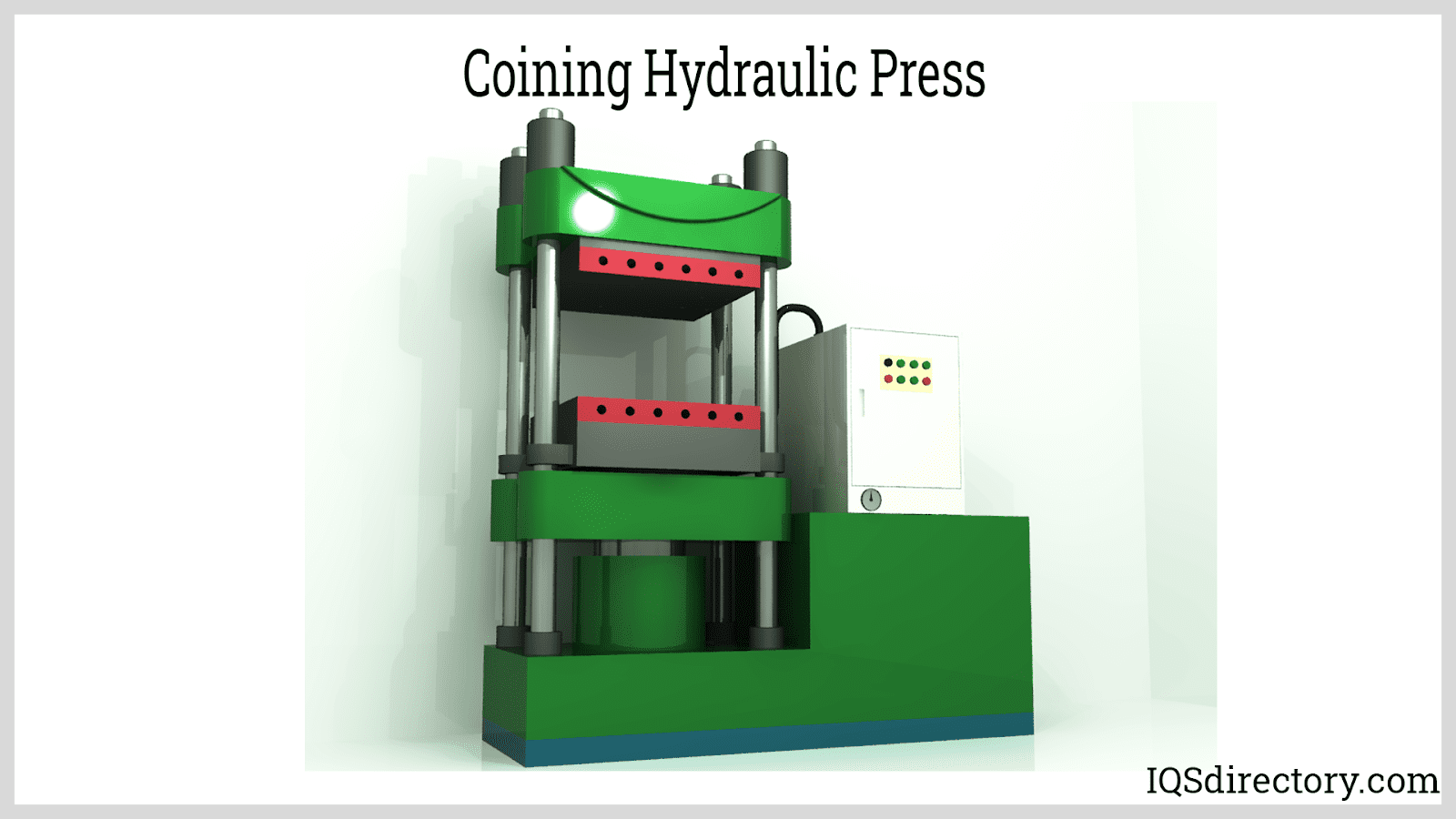
Stamping
Stamping is an widely encompassing term that describes a variety of manufacturing processes that use the hydraulic press to apply static pressure to produce finite and precise parts and components. Hydraulic presses are used for stamping due to their precision and ability to produce complicated and complex configurations. Since the stroke on a hydraulic press can be adjusted and the pressure to be applied controlled, hydraulic presses provide a more flexible and adaptable stamping method.
Chapter Six: Benefits of a Hydraulic Press
The force and pressure that is applied by a hydraulic press is far superior to any other material shaping and deforming method. The smooth working of a hydraulic press makes it one of the most efficient and productive processes for fabricating parts to meet the demands of specific tolerances and design factors. Since many of the functions of a hydraulic press are customizable and adaptable, they are the first choice for applications that require precision and accuracy.
In the metal shaping industry, force is the most salient factor since deforming hard metals using a cold process requires a great deal of force. The amount of force that a hydraulic press is capable of applying is unmatched by pneumatic and mechanical methods.
Benefits of a Hydraulic Press
Stroke
One of the necessities of a deforming process is that the device applying the pressure be able to maintain its strength throughout an application. A hydraulic press generates full pressing force all along its stroke. This particular benefit allows an operator to control all of the features of an application without having to wait for the machine to finish before making changes. It is the type of programming flexibility that makes a hydraulic press an exceptional choice for part production.
Customization
A hydraulic press can be changed and adapted to fit any production or assembly operation by changing a die, the pressure, stroke speed, or process position. By adjusting a few aspects of the press, a hydraulic press can be reoriented from producing large, massive parts to small precision ones. Engineering and design give the freedom to adjust, create, and perfect any type of configuration.
Footprin
The discussion of a company's footprint is constantly a topic of concern. The necessity to produce high quality components using the least amount of space has become a requirement. Hydraulic presses are capable of supplying the required pressure while using only half the needed space; this leads to optimization of a facility's assets and increased efficiency.
Maintenance
In heavy machinery industries, one of the factors planned into a budget is equipment maintenance since heavy duty equipment requires repair, monitoring, and continual adjustments. The components and parts of a hydraulic press as well as its power system are significantly less expensive when compared to various mechanical processes that include crankshafts, flywheels, brakes, and clutches. The lack of continuous maintenance and less expensive parts makes a hydraulic press an ideal method for increasing uptime while reducing overall costs.
Longevity
The first day a machine is placed in operation, its value begins to decrease. It is amortized over the life span of the equipment. The smooth and accurate force that is produced by a hydraulic press can be controlled such that the machine cannot be operated beyond its load capacity. This single feature extends a hydraulic press's time of usefulness and productivity.
Cost
The simple principle used to operate a hydraulic press eliminates many of the factors that make the operation of other processes so expensive. Without the need for elaborate gears, complex braking systems, and various forms of motors, hydraulic presses can operate efficiently and economically to produce high quality parts, components, and assemblies.
Noise
A major concern for government monitoring agencies is the amount of noise that employees are exposed to during their work day. Excessive noise can result in serious medical and mental issues that lead to absenteeism and production down time. Since a hydraulic press does not have any moving parts, its operation noise level is significantly reduced. The precision control provided by a hydraulic press allows management to control the amount of noise it will produce.
Upfront Costs
Another aspect of the mechanical operation of a hydraulic press is the cost of purchasing it. Without the need for machining or mechanical parts, a hydraulic press is less expensive to purchase and takes less time to set up. The simplicity of its operating process becomes economically apparent on the day it is installed.
Range of Designs
From hand operated hydraulic presses to those of several tons, there is a hydraulic press to fit any application or operation. Sales staff and manufacturers work closely with their clients to develop a metal working process that fits the needs of any application. There are table top models for laboratories and massive hydraulic presses that apply hundreds of tons of pressure. Regardless of the material to be shaped and formed, there is a hydraulic press to do the work.
Conclusion
- A hydraulic press is a mechanical device that uses the static pressure of a liquid, as defined by Pascal's principle, to shape, deform, and configure various types of metals, plastics, rubber, and wood.
- The passage of the fluids between the two pistons creates increased pressure that produces mechanical force to drive the anvil on a hydraulic press downward onto a workpiece that is deformed to produce a desired shape.
- The differences between the types of hydraulic presses depend on several factors, which include their frame and the metals used to manufacture them.
- From the shaping and creation of machine components to the crushing and compacting of waste and refuse, hydraulic presses are an essential part of modern industrial operations.
- Since the development of the Bramah Hydraulic Press at the end of the 18th Century, the hydraulic press has rapidly improved and advanced to become a highly technical tool that can provide precision and accurate deforming of materials.
GET YOUR COMPANY LISTED BELOW
Leading Manufacturers and Suppliers
How To Fix Hydraulic Press
Source: https://www.iqsdirectory.com/articles/hydraulic-press.html
Posted by: halloransaing1944.blogspot.com

0 Response to "How To Fix Hydraulic Press"
Post a Comment